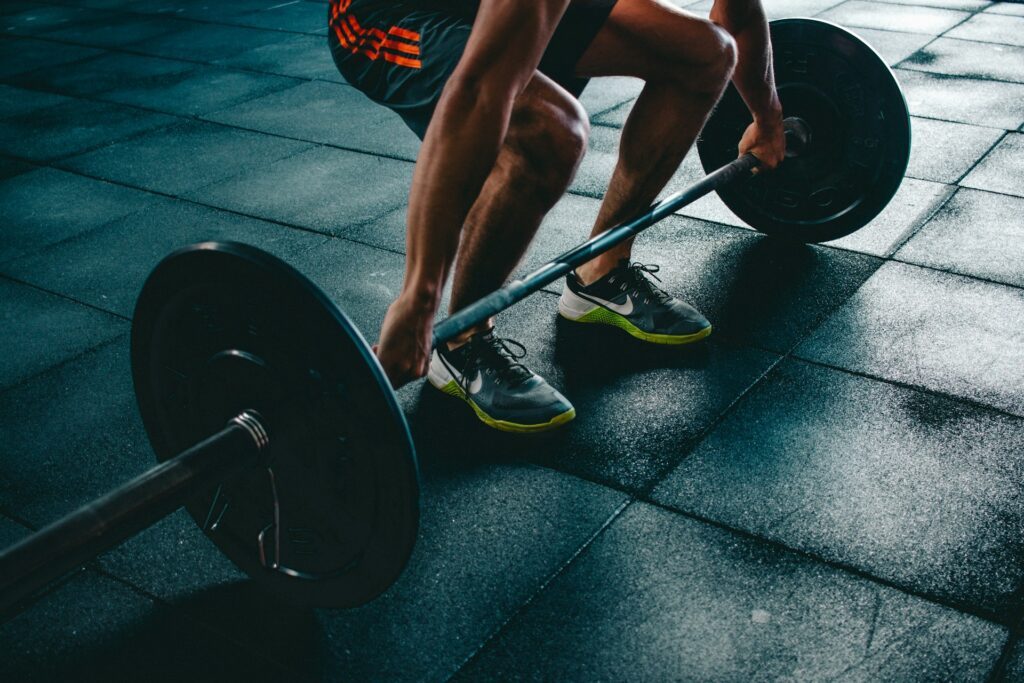Two common terms we hear in gyms are tempo and time under tension (TUT). The reason why I think a full blog post on this topic is important is because both tempo and TUT are misinterpreted and therefore often misapplied. Firstly, tempo and TUT are NOT the same thing and we will define each just below. Secondly, they are not a ‘type’ of training i.e you don’t do a TUT program! Every time you train you are spending TUT. Tempo is a training variable that we manipulate within training..
The most common way that these two concepts are misunderstood is when someone believes that significantly slowing down their repetition speed (tempo), increases the TUT they achieve in an exercise and is consequently superior for growth. I’m sure you’ve seen the bro’s (I’ve been one of them) doing 5 second eccentrics on every set of every exercise because it ‘increases their TUT’. This blog will explore why this is not necessarily the case and specifically:
-
How the duration of tension in training is important but not necessarily increased by slowing down reps.
-
What we believe is a better application of tempo in training and how it actually can be beneficial in increasing exercise stimulation on the muscle.
TUT
First things first, muscle hypertrophy is achieved through applying tension of an appropriate magnitude and duration to the target muscle. The magnitude will dictate the adaptation that occurs i.e higher magnitudes (loads) will elicit more strength and lower magnitudes will bias hypertrophy. The duration refers to the dose or how much of that tension or stimulus is being applied. From a resistance training perspective, the more we can do and importantly recover from, the better our progress is likely going to be.
So yes, duration of tension and therefore TUT is important within training but is this achieved by significantly slowing down your reps? Let’s compare 2 different sets of bicep curls.
-
Subject 1 completes their bicep curls at a regular cadence. They focus on squeezing the muscle hard at the end concentric and then lower the weight at a speed that is conducive of them being in control i.e not letting it drop
-
Subject 2 starts the same but now takes 5 seconds to lower the weight.
Subject 2 will be spending a lot longer performing each rep but why does subject 2 not necessarily have a better stimulus? The main factor is because that subject 1 will likely get a lot more reps. So whilst subject 2 may have more TUT per rep, subject 1 will complete more of them and therefore by the time the set is all said and done it could be argued that the amount of TUT for both subjects is similar.
What’s important is achieving enough stimulus per set to elicit a hypertrophic response and we do this by taking each set close to failure (RIR 0-3). So if you do a set 8 curls with a 5 second eccentric vs a set of 15 curls at normal cadence then as long as they reach that point of close to failure then you’re on the right track.
So yes slowing down the speed at which you perform an exercise will probably still be effective for muscle hypertrophy but there can be a catch. It’s likely that using slow eccentric training as a means of increasing TUT can be taken to a point where it becomes detrimental to one’s progress.
Firstly let’s consider session volume. As a general rule, when hypertrophy is the goal we want to spend most of our time working in rep ranges of 6-20. If you find that because you’re significantly slowing down the speed of the movement to increase TUT but now 50% of the sets you do in your workout are in the 3-5 rep range then you are cutting your training volume significantly and likely too much to optimise hypertrophy. Generally if we are in the 3-5 rep range the loads we are using will push some gains in strength but we don’t even get that anymore as the loads we have used for slowed eccentrics are too low.
Second is recovery. It’s well documented you can cause increased muscle disruption/damage from doing heavy eccentric work in your training. Whilst this sounds appealing for growth, you can always have too much of a good thing. If you are constantly sore and under recovered because all you do in training is extremely slow eccentrics then your ability to grow will likely be hindered as you simply can’t recover. If you can’t recover from training then your training volume will drop and you’ll also be more likely to get injured when training fatigued all the time.
Tempo
Tempo refers to the actual speed we perform each part of an exercise. Exercises we perform are commonly broken down into concentric and eccentric and then also further into concentric, end concentric, eccentric, end eccentric. If you are unsure what this means then concentric is the shortening of a muscle and eccentric the lengthening of a muscle. When someone says they are doing ‘tempo’ training (which again isn’t a thing) in order to achieve a better stimulus they are essentially manipulating the speed of these phases in the movement. As we have already discussed, slowing down the tempo does not necessarily equate to increased stimulus just because you are performing the movement slower and can even be detrimental to growth if taken to the extreme.
So what is the best application of tempo and how may this lead to a more stimulative exercise/session? Think about whenever you have learnt a new skill! You don’t start by trying to perform it at full speed. To fully piece it together you usually have to slow the movement down, slow parts of it down or even break movement down into segments. Well the same applies for exercises in the gym. If someone has technical issues with their squat that as a coach we want to address, it’s likely a good idea to give them a slowed tempo. In this example a 3 second eccentric with a 2 second pause would help them better think and coordinate the movement rather than have them dive bomb into the hole and come straight back up. Make them slow down the descent and give them time to think about bracing, where their knees should be tracking, feeling the bar on their back etc. Just like with any other skill, the more you practice the more automatic it comes.
If you use tempo as a means to improve technique then this is actually a time where coincidentally you will achieve a greater TUT on the TARGET muscle as opposed to a faster cadence for the same exercise. For example, let’s say for RDL’s the only thing you feel is your lower back. It turns out that when looking at your technique, the movement is not actually coming from you hinging at the hips at all and it’s simply your spine that is flexing to lower the weight. Now you’ve seen this, you slow the eccentric part of the movement down and focus on pushing your hips back the whole time with a neutral spine and bang your hamstring and glutes are smoked!! You’ve taken the same exercise with poor technique and working your spinal erectors to good technique and working your glutes and hamstrings. That’s how you would increase TUT for the target muscle using a tempo. As you become more and more proficient at that exercise you will likely remove that slower tempo and find a speed that simply allows for control of the movement with heavier loads.
Key Takeaways
-
Tempo and TUT are not forms or styles of training. Tempo is a training variable.
-
Slowing reps down to increase TUT does not necessarily equate to a greater stimulus as more reps can be completed at a normal rep cadence.
-
Excessively slowing down your exercises to increase TUT may actually have detrimental effects on hypertrophy if volume demands are not met. It may also increase your likelihood of injury from poor recovery.
-
Tempos main use should be the help improve technique.
-
Improved technique using a tempo may actually increase TUT on the target muscle as you are correctly training that muscle.







